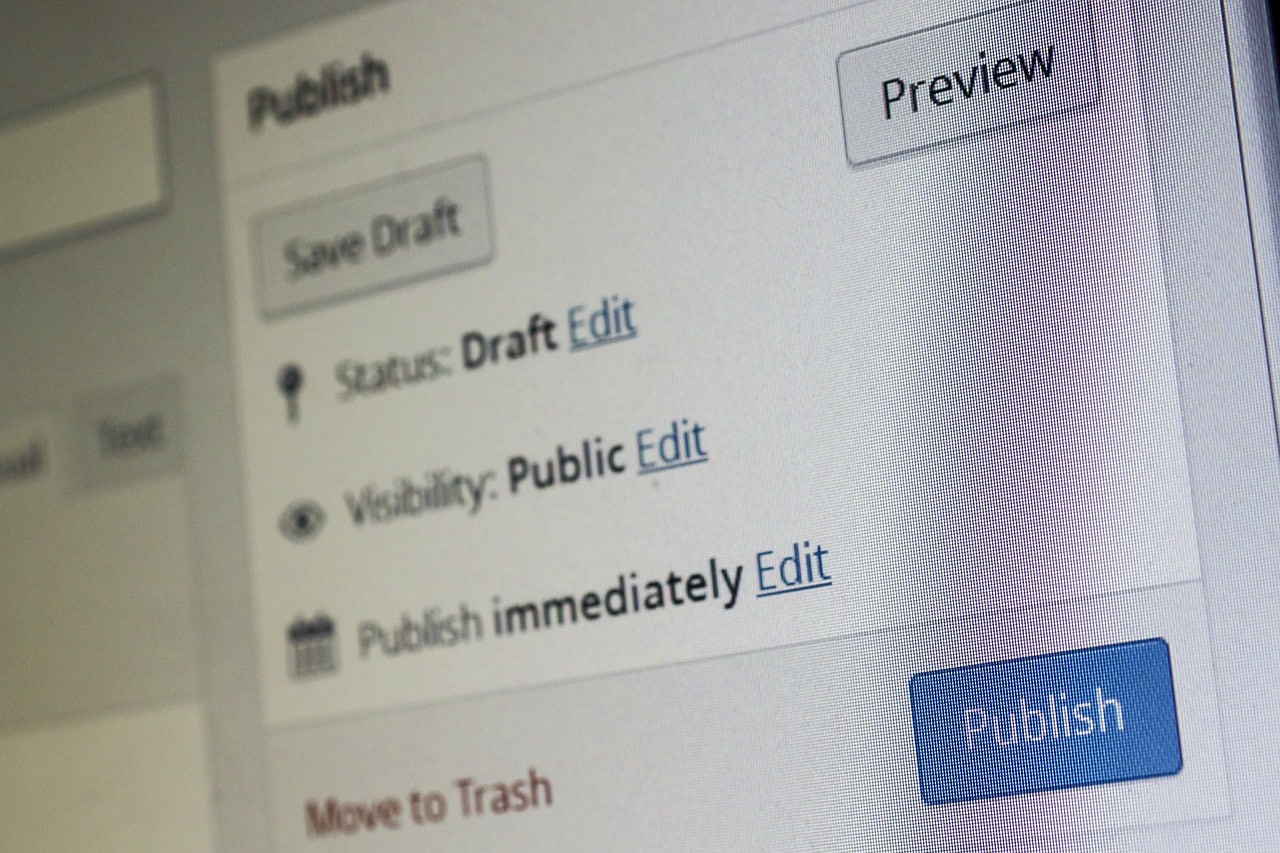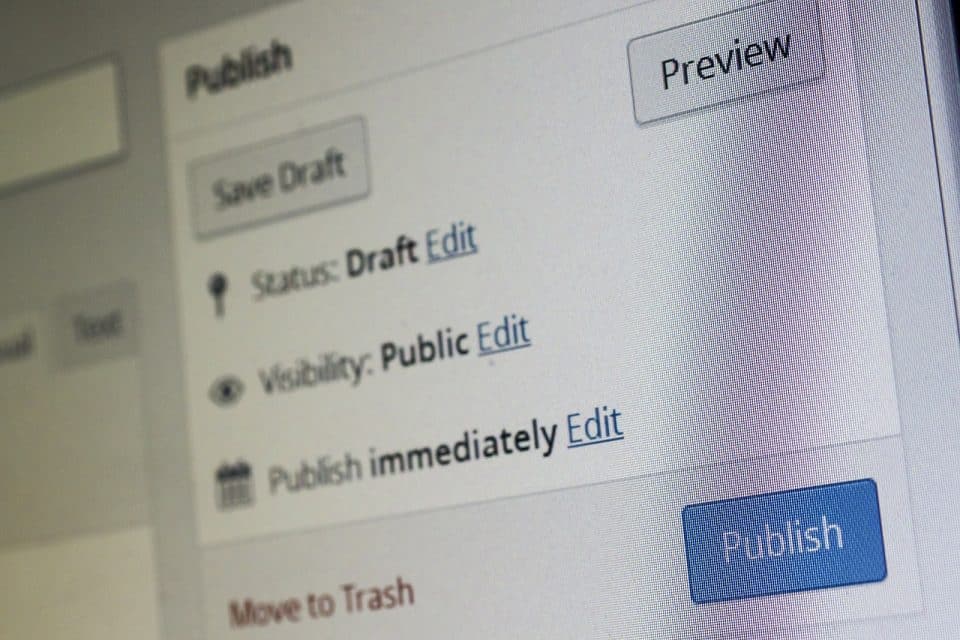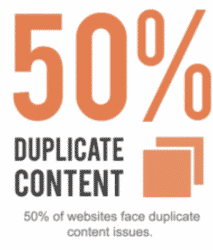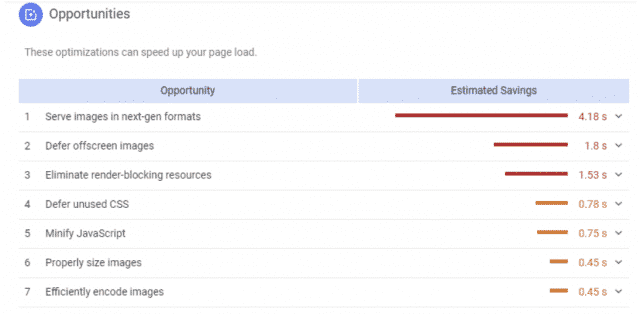In case you missed part one of our discussion on common SEO problems, where we looked at technical SEO issues, then click here.
Now that we’ve resolved a number of foundational, technical SEO issues, we can shift focus to optimization problems that occur in our content. While some of these problems aren’t as impactful as bad site structure or slow page speeds, they are still important to fix because they can interrupt the user experience and get in the way of high search rankings.
After all, content is why the majority of people visit your pages. This is especially true in the early phases of your sales funnel, where they are considering multiple possible solutions and need information and answers their key questions to facilitate their decision and eventual purchase.
SEO issues in our content can make it difficult for visitors to find these answers and the information to solve their problems and questions. This undervalues the potential impact of content. You spend a lot of time, money and creativity to produce compelling content.
You don’t want SEO issues to undermine all of this hard work and spend!
Thus, remedying the content SEO issues detailed below will achieve a number of key goals:
- Ensures your content is easily discoverable on key SERPs
- Cleans up your site and improves overall performance
- Increases ROI of your content efforts
- Creates a better overall user experience
I. Content Issues
All of the issues discussed in this guide are somehow related to content, whether they are specific to images or blog content. That said, there are some overarching content issues that should be looked at first because they have a bigger overall impact on your site’s success and rankings.
We’ll look at solutions for each section of this category.
Not Enough Good Content
Google’s ranking algorithm is designed to measure a site’s worth (and thereby its ranking) by looking at a number of important indicators that suggest a site is offering valuable, authoritative and helpful content that visitors are effectively using to answer their search queries. If your content doesn’t deliver on this front, then your SEO is severely weakened.
This means that it isn’t just about creating content for the sake of content. While this may help you start to begin ranking for certain keywords, it will only get you so far. You need to focus on creating content that your visitors want to read and that they find useful, if you want to get close to claiming the top rank.
Unfortunately, there’s no perfect recipe for content success. You’re going to spend a lot of time creating content that you think is good, but users don’t engage with.
That’s normal. The key is understanding why some content pieces are more successful than others and capitalizing on those insights.
SOLUTIONS:
- Content audit: Your first step should be to perform a content audit of your site. This will give you a clear rundown of all of your content pieces alongside key metrics, like their word counts, engagement numbers and other key dimensions. You can add additional data points, like how much you’ve spent on each piece. Performing this kind of audit can yield a lot of important insights into what content pieces are working and which pieces are underperforming. Then, you can use elements from your more successful pieces to bolster performance in those that are failing to make the cut. If you don’t want to invest in a content auditing tool, you can discover similar insights by creating a spreadsheet that details each individual content piece’s information. This route is certainly more time consuming, but you’ll come to similar conclusions.
- Comparison analysis: An alternative strategy is to look at what your competitors are doing to remain successful in their content efforts. This is particularly powerful if you can’t derive any positive elements from your own content pieces, or you lack the time and other resources to really do a lot of data-diving and auditing. You can essentially piggyback off of the research and time that your competitors have spent analyzing wins and losses in their content efforts. Then, apply their successful strategies in your own marketing. That said, it’s painfully obvious when you’ve copied content ideas straight from your competitors, so be sure to inject your own creativity into any inspiration you receive from a comparison analysis.
- Revize poor content: There’s no rule that says you can improve existing content pieces. Don’t feel that you need to start from square one if your current content isn’t getting the job done on the SEO side of things. You don’t want the time and effort you’ve spent creating your past content to go completely to waste. Instead, take some time to revise your existing content and even republish it. You may be able to unlock its hidden potential and raise the overall level of content quality on your site.
Duplicate Content
In 2016, SEMRush examined data from 100,000 websites and 450 million unique pages to see what the most prevalent SEO issues were. In half of the websites analyzed, the report found duplicate content.
While this is a high number, I’m actually surprised that it is only half of the websites studied because duplicate content is something that all sites face at one point or another.
And, despite common misconceptions, it’s not as damaging to rankings as you may think. Google understands that duplicate content is inevitable and as long as you aren’t doing it to intentionally manipulate rankings, then its direct impact on your rankings is little.
However, it is an important issue to fix because of how it may indirectly affect your site. First, running into the same content over and over again can be dissatisfying for visitors. Your site’s guests expect each page to be unique.
Secondly, duplicated content can potentially harm your crawl budget. Bots may be crawling identical information and using up crawl budget unexpectedly. This means your latest, value-packed content may not be indexed!
SOLUTIONS:
- Audit again: Auditing your site’s SEO can also give you data about duplicate content. This is easily the most efficient way to find repeat content that you didn’t intend to be there. Then, it’s just a matter of removing the unwanted, identical pages.
- URL canonicalization: Duplicate pages occur commonly when there are multiple links designed to go the same page, but instead go to different copies of the same page. To the naked eye, there’s no difference between “www.yoursite.com,” “yoursite.com” or “yoursite.com/home.” They all bring users to your homepage. However, search engines may see each URL as a unique page. This will split the worth and authority of these pages, which will make your job, from an SEO perspective, much harder than it needs to be. You’ll want to test certain URLs, particularly to your homepage (try HTTP vs HTTPS!) and make sure that they are redirecting to the same URL and not splitting rank power.
- Rel=canonical: So, we’ve resolved fixing when the same page has multiple URLs, but what about when multiple pages have very similar content. How do we showcase that they aren’t duplicated. This is a common issue for area-specific landing pages or ecommerce sites, where there are a lot of pages that are going to look nearly identical to one another. As much as we’d like to take the time to write unique product descriptions and tags for every page, it’s time consuming and can make site organization a living nightmare. The rel=canonical tag can help solve some of these woes by ensuring that these seemingly identical pages are all captured under one, original URL. Again, this is designed to protect you from splitting page value across multiple links when it is really the same content across each.
Too Much Cumbersome Content
We touched on this in part one of debugging common SEO issues, when we looked at page speed issues. To reiterate, too much cumbersome content can slow your pages down, especially when it is not properly optimized. When your site’s pages load too slowly, it can directly harm your rankings. Plus, your traffic will be negatively affected too; people don’t want to wait for long page load times to browse your content. It’s much easier for them to click back to the SERPs and find a new, fast-loading page to answer their questions.
Slow, cumbersome content can come in a lot of different formats, from oversized images (more on this later), to too many flash elements and even issues with JavaScript coding. Whenever there’s too much happening on a single page, load speeds are going to be negatively impacted.
This is something to bare in mind as you edit past pages and create new content in the future. While these elements certainly add value to your pages and enhance your written content, too much of a good thing can quickly gum up the works.
You have to find a balance between offering these rich content components and keeping your page speeds high. If a page is particularly overloaded with elements that are slowing it down, you may want to separate it into two or three different content pages to reduce stress on your site’s performance and speed.
SOLUTIONS:
Page speed insights: As mentioned in part one of debugging common SEO issues, Google has a convenient PageSpeed Insights tool, which not only clocks the overall speed, but also returns a number of insights or “Opportunities” to improve speed.
As you can see from this example, there’s a number of issues regarding cumbersome content, like images, JavaScript and CSS elements. This is a very fast and effective way to start identifying the types of content elements that are slowing your pages down.
- Remove, compress or optimize: Once you’ve identified the culprits behind your slower-than-acceptable speeds, it’s all about limiting those heavy content elements on your pages to allow them to breath and perform optimally, in terms of page speed. This means removing unnecessary elements, especially plugins that aren’t being used enough to justify their effect on page speed. You’ll also want to edit your JavaScript and CSS coding to make sure there are no unnecessary components. Remember, anything that you aren’t using will still slow down your page! Whenever possible, compress your cumbersome content to reduce strain. gZip compression is a great tool for this. You can wrap all of these different, heavy objects (JavaScript files, CSS, images, etc.) in one, compressed package. This dramatically reduces the size of the data being transferred, which in turn boosts speed and performance.
- Check your speed: Once you’ve taken steps to reduce your cumbersome content, revisit the PageSpeed Insights tool and see if your efforts have positively impacted your speed.
II. Image Issues
Images are vital components to your website’s pages, whether it’s a small logo or icon, an image heading at the top of a blog post to entice users to continue reading or a small visualization to help visitors understand an important concept.
Images break up the monotony of plain blocks of text. They add necessary structure to our pages, as well as visual stimulation. However, there are image SEO issues that we need to be careful of.
Sluggish Pages
As you can see in our above example of PageSpeed Insights, images can cause big delays in page speeds. This occurs when there are too many images populating a single page, especially when those images are large and high quality. While we want quality images on our site, we have to be careful because this creates additional stress on the site.
Compressing images can vastly speed up page performance. Alternatively, you can set rules on the number of images per page, what format those images must be in and their size. For instance, I’ve guest-posted to websites with content rules that limit submissions to only five images, in jpeg format and under 100 kilobytes in size.
These types of parameters make it really easy to protect your site and its pages from image bloat, especially if you have a lot of guest authors contributing.
Alt Tags
You know that old saying, a picture is worth a thousand words? That doesn’t necessarily apply to search engines. While they’ve gotten pretty good at identifying images, they sometimes need a little help understanding what’s being depicted. This is where alt tags come into play.
Alt tags give search engines and users a textual understanding of images. This makes it easier for Google to categorize images and know when to display them in image search results. So, it is important to optimize your alt tags with keywords.
For visually impaired users, alt tags make it possible for them to engage with your visual content, even if they can’t physically see it.
Broken Images
Similar to broken links, bad images negatively impact the user experience, your site’s performance and even search rankings. When a user sees a big, blank space left behind in the wake of a broken image, it’s distracting and they may even feel that it is a sign that your site is poorly maintained.
SOLUTIONS:
- Eliminate unnecessary images: Images are definitely important components to your site’s user experience. However, they should only add value, not detract from it. In other words, images for the sake of having visuals isn’t always the smartest strategy. You should really think critically about what these images are adding to the page. Is it just simply structure? Is it helping to explain the concepts you’re discussing? You may find that you don’t need all of these images.
- Optimize remaining images: After you’ve removed the unnecessary images, your next task is to ensure that the ones still remaining are properly formatted. Not only does this mean compressing images to reduce their file size and using the right image formats, but it also includes creating keyword-optimized alt tags so search engines can properly categorize your visuals and display them in image SERPs.
- Create image standards: As I touched on, if you have a lot of different content creators producing for your site, you’ll want to add image standards to your content style sheet. This will help regulate how much stress each page is causing to your overall site speed. You won’t have any overloaded pages that are disrupting the user experience with too many huge images.
Conclusions
When you eliminate these content SEO issues, you’ll not only see your rankings start to climb, but you’ll find that your content assets see more visibility on the SERPs. This means more traffic and, if the quality is there, higher engagement metrics.
We’re almost finished debugging common, on-site SEO problems, but there’s still some miscellaneous SEO issues that we need to address, particularly keyword optimization issues and optimizing meta tags and descriptions.
These areas are covered in part 3 of debugging common SEO issues, so be sure to continue reading on.



